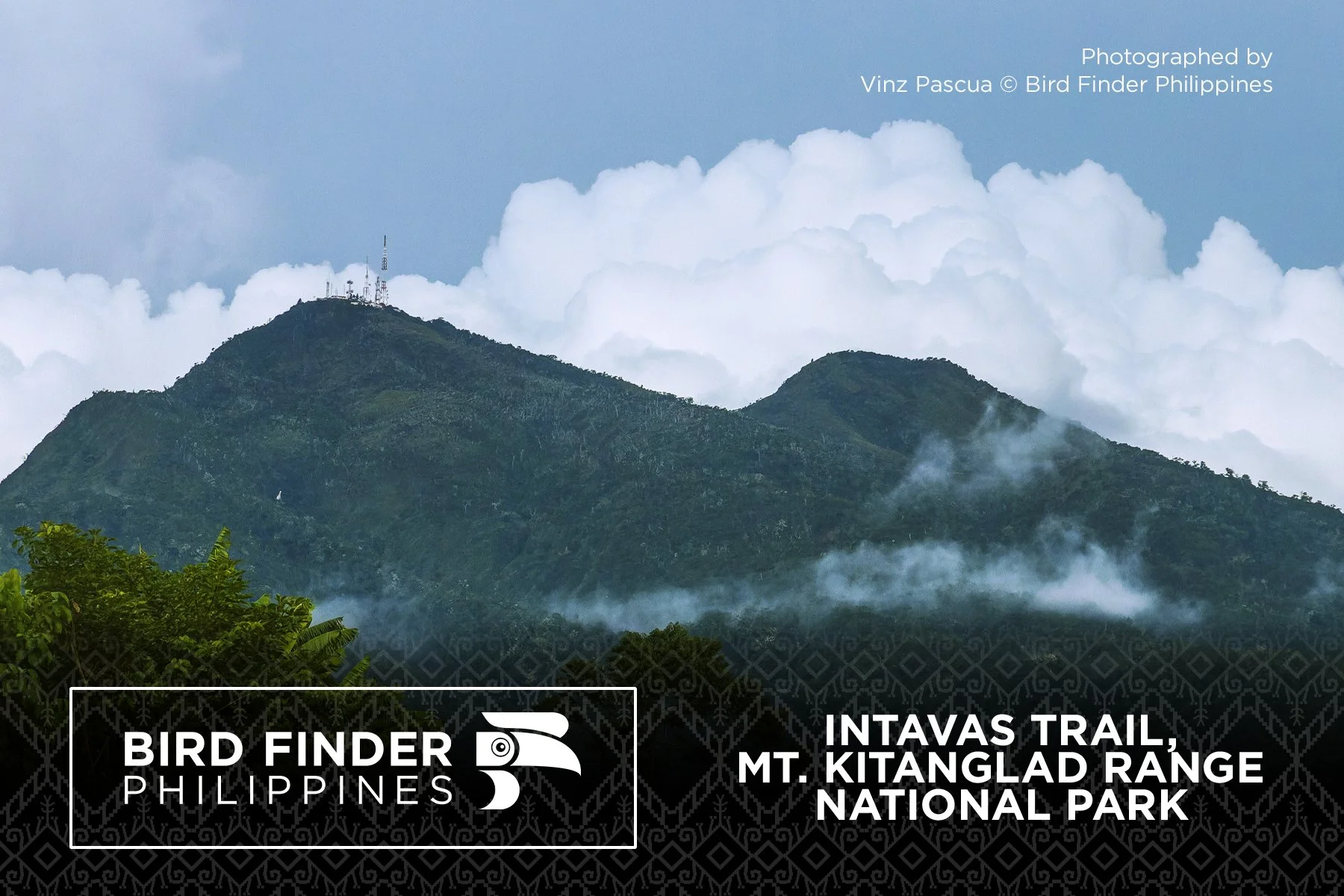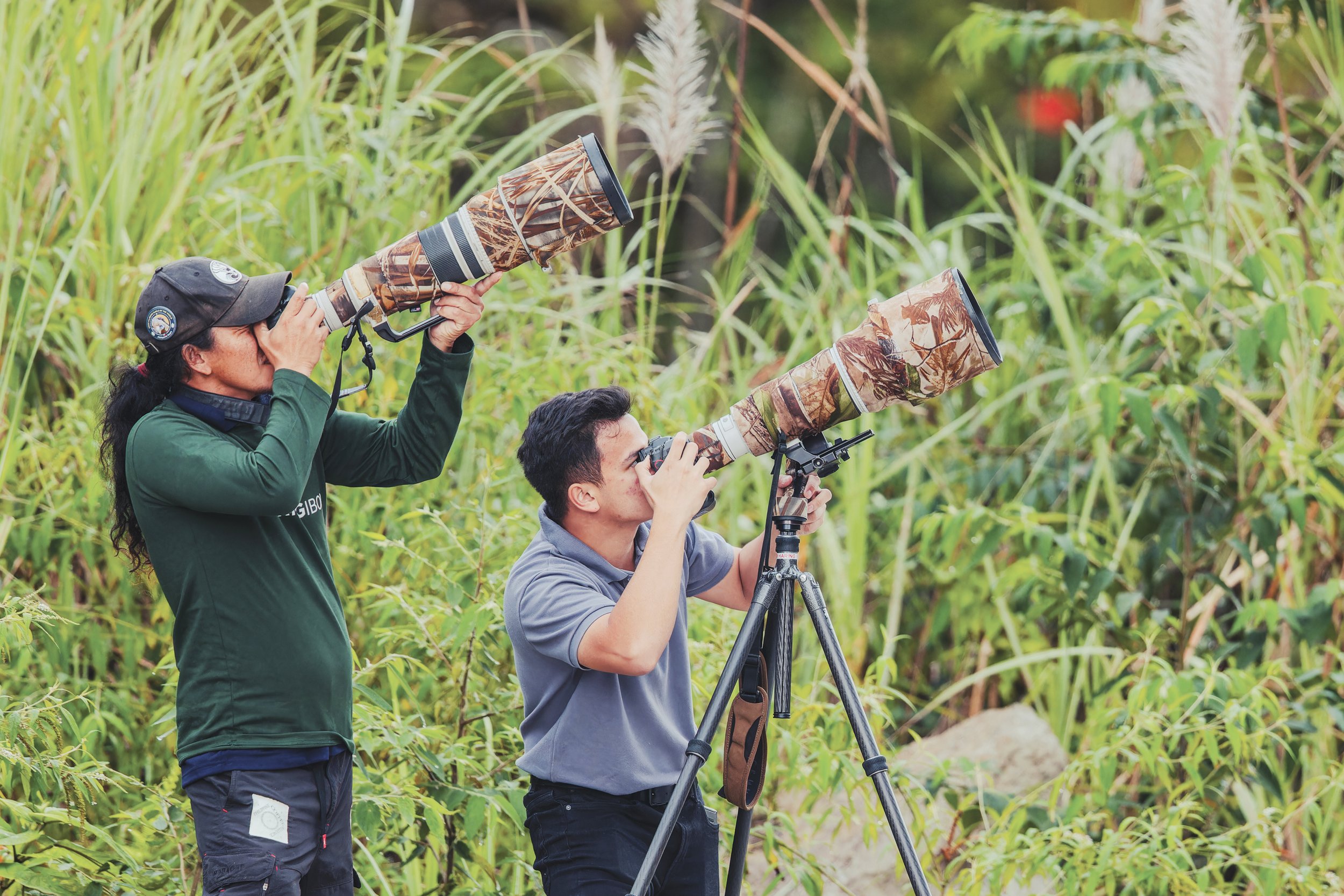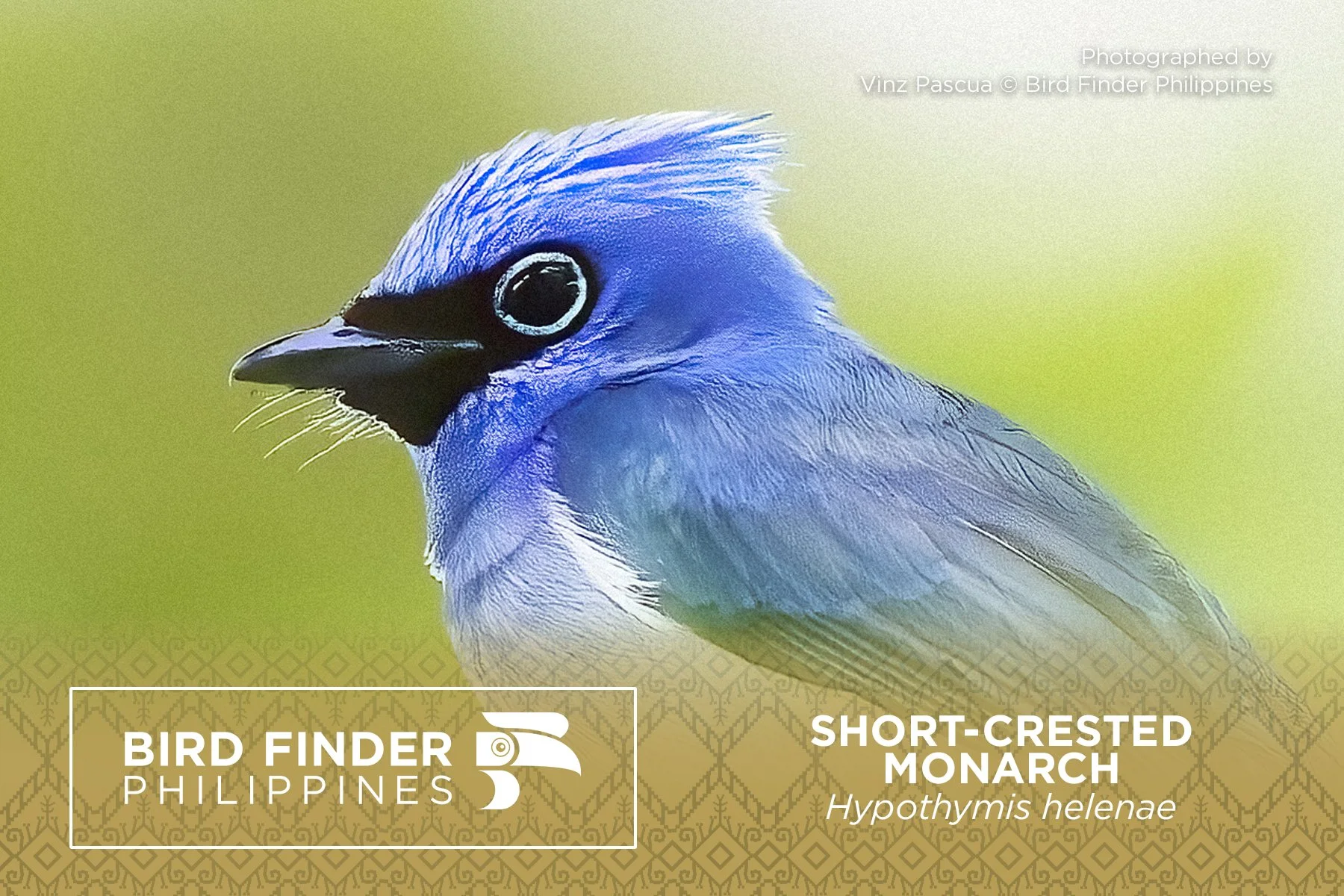Special
Philippine Eagle
Tours
Commencing January 15 to March 2026
Limited Slots Available
Special Philippine Eagle Tour 2026
Beginning January 15, 2026 and running through March 2026, Bird Finder Philippines proudly presents the Special Philippine Eagle Tours — an extraordinary, limited-edition birding experience created for serious birders, photographers, and lovers of wildlife and wilderness.
This exclusive expedition offers a rare and intimate opportunity to see the Great Philippine Eagle (Pithecophaga jefferyi) — the largest and rarest eagle in the world, and widely regarded as the most majestic of all eagles — soaring, hunting, and caring for its young in its natural mountain forest home.
A nesting pair is currently brooding an egg, presenting a very high probability of witnessing one of the most awe-inspiring wildlife scenes on Earth: the parent eagles bringing food and feeding their chick. Very few birders in history have seen this moment in the wild. Reaching the nest requires only a 45-minute moderate hike, leading to a well-positioned photography hide less than 70 meters away. This safe, ethical, and unobtrusive setup provides exceptional viewing and photographic opportunities while prioritizing the welfare of the eagles.
5pax Maximum Tour Group Recommended
To make the best bird watching and bird photography experience, and to not disturb the environment around the nesting Philippine Eagles, we recommend having a maximum Tour Group size of 5 people.
Our National Bird
-
Across numerous Filipino cultures, this magnificent eagle is known by the local name “Haring Ibon” meaning “King of Birds.”
Just like a King, this bird also dawns a crown, in the form of a shaggy crest that erects when they find something intriguing.
When you compare all the raptors of the world, the Philippine Eagle is the only raptor with naturally blue-grey eyes.
-
Blas Tabaranza Jr. and Robert S. Kennedy gave the Philippine Eagle the title of “Largest Eagle in the World” in terms of height and overall wing surface area.
At 1.021 meters tall, an adult Philippine Eagle is as tall as a small child!
The Philippine Eagle is also the largest Eagle in terms of Bill Gape, Bill Culmen, Bill Height, and Tarsus.
In the Philippines, the Philippine Eagle is the largest flying animal in the country!
The second largest flying animal in the Philippines is the Golden-crowned Flying Fox, which is one of the Philippine Eagle’s prey items!
-
The Philippine Eagle is only found on four island in the Philippines: Luzon, Samar, Leyte, and Mindanao.
Their preferred habitat is dipterocarp forests and residual gallery forests up to 2000 masl.
Due to habitat loss, deforestation, and hunting, an estimated 128-924 mature individuals are left in the wild.
-
Philippine Colugo (Cynocephalus volans)
Locally known as “Kagwang,” these endemic mammals are regarded as their favorite!
Monkeys (Macaca fascicularis philippensis)
When this eagle was first described, the name “Monkey-eating Eagle” was given based on the accounts of Filipinos seeing this massive raptor eating monkeys.
Philippine Palm Civet (Paradoxurus philippinensis)
Monitor Lizards (Varanus sp.)
Philippine Brown Deer (Rusa marianna)
Hornbills
Owls
Hawks
Flying Squirrels
Snakes
Bats
Rats
If you think about it, they can eat pretty much anything smaller than the Philippine Eagle.
-
The DENR National List of Threatened Terrestrial Fauna of the Philippines (DAO 2019-09) lists the Philippine Eagle as a Critically Endangered species.
The IUCN Red List of Threatened Species lists the Philippine Eagle as a Critically Endangered species.
Our Tour Offerings for 2026
5-Day Philippine Eagle Encounter
A focused itinerary devoted to observing and photographing the Philippine Eagle at the nesting site, complemented by a visit to the Philippine Eagle Conservation Center for a close encounter and deeper understanding of conservation efforts.
Day 0 - Start
-
Check-out at hotel
Air travel from Manila to Cagayan de Oro
Land travel to Malaybalay City, Bukidnon (2.5hrs)
Morning birding along the way
Check in and rest at hotel
-
Lunch along the way, dinner near hotel
Overnight at Loiza’s Pavilion, Malaybalay City
Day 1 - Mindanao Endemics
-
Land travel to Sitio Intavas, Sumilao, Bukidnon (1 hr)
Whole day birding
-
Intavas Trail, Mt. Kitanglad Range National Park
Intavas Trail starts at a community settlement named Sitio Intavas. It is a 1.5 km long trek on a rocky unpaved road with a gentle upslope. At the end of this trail is a resting shed and the start of a steep trek up to the peak of Mt. Kitanglad.
-
Philippine Eagle
Apo Myna
Red-eared Parrotfinch
Mindanao Heleia
McGregor’s Cuckooshrike
Cinnamon Ibon
Mindanao Racket-tail
Mindanao Lorikeet
Black-and-cinnamon Fantail
Apo Sunbird
Grey-hooded Sunbird
Long-tailed Bush Warbler
Metallic Pigeon
Negros Leaf-warbler
Fire-throated Flowerpecker
Turquoise Flycatcher
Little Pied Flycatcher
-
Lunch along the way, dinner near hotel
Overnight at Loiza’s Pavilion
Day 2 - Philippine Eagle (Hide)
-
Land travel to Lantapan, Bukidnon (1 hr)
Whole day birding
-
Cinchona Forest Reserve, Mt. Kitanglad
Cinchona Forest Reserve is a known nesting site for Philippine Eagles in the Southeastern edge of Mt Kitanglad Range. It was established in the 1920s as a plantation for Cinchona Trees to boost production of anti-malaria ingredient – Quinine. The well-preserved forest here provides habitat several Philippine Eagles and numerous Mindanao endemic wildlife.
-
Philippine Eagle
Pinsker’s Hawk-eagle
Philippine Honey-buzzard
Mindanao Hornbill
Yellow-breasted Fruit Dove
Amethyst Brown-dove
Cinnamon Ibon
Stripe-breasted Rhabdornis
Grey-throated Sunbird
Flame-crowned Flowerpecker
Buzzing Flowerpecker
Yellow-bellied Whistler
Black-and-cinnamon Fantail
Bundok Flycatcher
Turquoise Flycatcher
Little Pied Flycatcher
Long-tailed Bush Warbler
-
Lunch along the way, dinner near hotel
Overnight at Loiza’s Pavilion
Day 3 - Philippine Eagle (Hide)
-
Land travel to Lantapan, Bukidnon (1 hr)
Whole day birding
-
Cinchona Forest Reserve, Mt. Kitanglad
Cinchona Forest Reserve is a known nesting site for Philippine Eagles in the Southeastern edge of Mt Kitanglad Range. It was established in the 1920s as a plantation for Cinchona Trees to boost production of anti-malaria ingredient – Quinine. The well-preserved forest here provides habitat several Philippine Eagles and numerous Mindanao endemic wildlife.
-
Philippine Eagle
Pinsker’s Hawk-eagle
Philippine Honey-buzzard
Mindanao Hornbill
Yellow-breasted Fruit Dove
Amethyst Brown-dove
Cinnamon Ibon
Stripe-breasted Rhabdornis
Grey-throated Sunbird
Flame-crowned Flowerpecker
Buzzing Flowerpecker
Yellow-bellied Whistler
Black-and-cinnamon Fantail
Bundok Flycatcher
Turquoise Flycatcher
Little Pied Flycatcher
Long-tailed Bush Warbler
-
Lunch along the way, dinner near hotel
Overnight at Loiza’s Pavilion
Day 4 - Mindanao Endemics (Hide)
-
Land travel to Impasugong, Bukidnon (1 hr)
Whole day birding
-
Center for Ecological Development and Recreation (CEDAR) Park
CEDAR is a reforestation project in Mindanao co-managed by the Local Government of Impasugong, Bukidnon and the Department of Environment and Natural Resources. The trail heading towards Dila and Gantungan Falls host several of Mindanao’s most elusive endemic species.
Maputi Bird Preserve
Created and maintained by our very own Bird Finder, Ben Maputi. This area houses a photography hide for some of the most secretive Mindanao endemic bird species.
Alternatives: Intavas Trail and Cinchona Forest Reserve
-
Southern Silvery Kingfisher
Blue-capped Kingfisher
Bagobo Babbler
Cryptic Flycatcher
Mindanao Hornbill
Black-and-Cinnamon Fantail
Red-eared Parrotfinch
Grey-hooded Sunbird
Bundok Flycatcher
Giant Scops Owl
-
Lunch along the way, dinner near hotel
Overnight at Loiza’s Pavilion
Day 5 - Mindanao Endemics & PEC
-
Check-out at hotel
Land travel to Davao City (5 hrs)
Visit to conservation center
Check-in and rest at hotel
-
Philippine Eagle Center
Philippine Eagle Center was initially established for the rescue and rehabilitation of Philippine Eagles. A sanctuary for the giant raptors, the facility has since expanded to cover other Philippine raptors, other threatened birds and wildlife and now serves as to educate the public about threatened species and their habitats.
-
Philippine Eagles
Pinsker’s Hawk-eagle
Philippine Serpent Eagle
Rufous-lored Kingfisher
Philippine Pied Fantail
Purple-throated Sunbird
Other raptors and wildlife
-
Lunch along the way, dinner near hotel
Overnight at Hotel Tropika, Davao City
Day 6 - End
-
Check-out at hotel
Air travel from Davao City to Manila
Check in and rest at hotel
-
Lunch at restaurant along the way, dinner at hotel
Our Tour Offerings for 2026
10-Day Philippine Eagle & Mindanao Endemics Expedition
A full adventure combining the Philippine Eagle encounter with extensive birding across Mindanao’s montane and lowland habitats — targeting sought-after species such as the Apo Myna, Wattled Broadbill, Blue-capped Kingfisher, Bagobo Babbler, Celestial Monarch, Red-eared Parrotfinch, and many others.
Day 0 - Start
-
International air travel arrival in Manila
Pick up at Ninoy Aquino International Airport (NAIA Terminal), Manila
Land travel to Las Pinas City (15 - 20 mins) for hotel check-in.
-
Lunch and dinner at nearby restaurant
Overnight at Mella Hotel / Britanny Hotel Global South, Las Pinsa City
Day 1 - Mindanao Endemics
-
Check-out at hotel
Air travel from Manila to Cagayan de Oro
Land travel to Malaybalay City, Bukidnon (2.5hrs)
Morning birding along the way
Check in and rest at hotel
-
San Vicente Trail, Bukidnon
Northwestern edge of Mt. Kitanglad Range National Park
-
Soaring Philippine Eagles
Rufous Hornbills
Writhed Hornbills
Handsome Sunbird
-
Lunch along the way, dinner near hotel
Overnight at Loiza’s Pavilion, Malaybalay City
Day 2 - Philippine Eagle (Hide)
-
Land travel to Sitio Intavas, Sumilao, Bukidnon (1 hr)
Whole day birding
-
Intavas Trail, Mt. Kitanglad Range National Park
Intavas Trail starts at a community settlement named Sitio Intavas. It is a 1.5 km long trek on a rocky unpaved road with a gentle upslope. At the end of this trail is a resting shed and the start of a steep trek up to the peak of Mt. Kitanglad.
-
Philippine Eagle
Apo Myna
Red-eared Parrotfinch
Mindanao Heleia
McGregor’s Cuckooshrike
Cinnamon Ibon
Mindanao Racket-tail
Mindanao Lorikeet
Black-and-cinnamon Fantail
Apo Sunbird
Grey-hooded Sunbird
Long-tailed Bush Warbler
Metallic Pigeon
Negros Leaf-warbler
Fire-throated Flowerpecker
Turquoise Flycatcher
Little Pied Flycatcher
-
Lunch along the way, dinner near hotel
Overnight at Loiza’s Pavilion
Day 3 - Philippine Eagle (Hide)
-
Land travel to Lantapan, Bukidnon (1 hr)
Whole day birding
-
Cinchona Forest Reserve, Mt. Kitanglad
Cinchona Forest Reserve is a known nesting site for Philippine Eagles in the Southeastern edge of Mt Kitanglad Range. It was established in the 1920s as a plantation for Cinchona Trees to boost production of anti-malaria ingredient – Quinine. The well-preserved forest here provides habitat several Philippine Eagles and numerous Mindanao endemic wildlife.
-
Philippine Eagle
Pinsker’s Hawk-eagle
Philippine Honey-buzzard
Mindanao Hornbill
Yellow-breasted Fruit Dove
Amethyst Brown-dove
Cinnamon Ibon
Stripe-breasted Rhabdornis
Grey-throated Sunbird
Flame-crowned Flowerpecker
Buzzing Flowerpecker
Yellow-bellied Whistler
Black-and-cinnamon Fantail
Bundok Flycatcher
Turquoise Flycatcher
Little Pied Flycatcher
Long-tailed Bush Warbler
-
Lunch along the way, dinner near hotel
Overnight at Loiza’s Pavilion
Day 4 - Mindanao Endemics
-
Land travel to Lantapan, Bukidnon (1 hr)
Whole day birding
-
Cinchona Forest Reserve, Mt. Kitanglad
Cinchona Forest Reserve is a known nesting site for Philippine Eagles in the Southeastern edge of Mt Kitanglad Range. It was established in the 1920s as a plantation for Cinchona Trees to boost production of anti-malaria ingredient – Quinine. The well-preserved forest here provides habitat several Philippine Eagles and numerous Mindanao endemic wildlife.
-
Philippine Eagle
Pinsker’s Hawk-eagle
Philippine Honey-buzzard
Mindanao Hornbill
Yellow-breasted Fruit Dove
Amethyst Brown-dove
Cinnamon Ibon
Stripe-breasted Rhabdornis
Grey-throated Sunbird
Flame-crowned Flowerpecker
Buzzing Flowerpecker
Yellow-bellied Whistler
Black-and-cinnamon Fantail
Bundok Flycatcher
Turquoise Flycatcher
Little Pied Flycatcher
Long-tailed Bush Warbler
-
Lunch along the way, dinner near hotel
Overnight at Loiza’s Pavilion
Day 5 - Mindanao Endemics (Hide)
-
Land travel to Impasugong, Bukidnon (1 hr)
Whole day birding
-
Center for Ecological Development and Recreation (CEDAR) Park
CEDAR is a reforestation project in Mindanao co-managed by the Local Government of Impasugong, Bukidnon and the Department of Environment and Natural Resources. The trail heading towards Dila and Gantungan Falls host several of Mindanao’s most elusive endemic species.
Maputi Bird Preserve
Created and maintained by our very own Bird Finder, Ben Maputi. This area houses a photography hide for some of the most secretive Mindanao endemic bird species.
Alternatives: Intavas Trail and Cinchona Forest Reserve
-
Southern Silvery Kingfisher
Blue-capped Kingfisher
Bagobo Babbler
Cryptic Flycatcher
Mindanao Hornbill
Black-and-Cinnamon Fantail
Red-eared Parrotfinch
Grey-hooded Sunbird
Bundok Flycatcher
Giant Scops Owl
-
Lunch along the way, dinner near hotel
Overnight at Loiza’s Pavilion
Day 6 - Mindanao Endemics
-
Check-out at hotel
Land travel to Bislig (6.5 hrs)
Birding along the way or afternoon birding (time permitting)
Check-in at Paper Country Inn, Bislig City
-
Bislig Lowland Forests
Bislig Lowland Forests was once a logging concession for one of the largest logging companies in the Philippines. It has since been abandoned and its remnant forests allowed to regenerate. It is one of the most popular birdwatching sites in Mindanao with its lowland forests serving as home to numerous endemic bird species
-
Celestial Monarch
Short-crested Monarch
Mindanao Wattled Broadbill
Rufous Paradise-flycatcher
Mindanao Blue Fantail
Rufous Hornbill
Writhed Hornbill
Mindanao Hornbill
Mindanao Bleeding-heart
Pink-bellied Imperial Pigeon
Yellow-breasted Fruit-dove
Mindanao Brown-Dove
Rufous-lored Kingfisher
Azure-breasted Pitta
Philippine Trogon
-
Lunch along the way, dinner at the hotel
Overnight at Paper Country Inn, Bislig City
Days 7-8 - Mindanao Endemics
-
Land travel to forest (1 hr)
Whole day birding
-
Bislig Lowland Forests
Bislig Lowland Forests was once a logging concession for one of the largest logging companies in the Philippines. It has since been abandoned and its remnant forests allowed to regenerate. It is one of the most popular birdwatching sites in Mindanao with its lowland forests serving as home to numerous endemic bird species
-
Celestial Monarch
Short-crested Monarch
Mindanao Wattled Broadbill
Rufous Paradise-flycatcher
Mindanao Blue Fantail
Rufous Hornbill
Writhed Hornbill
Mindanao Hornbill
Mindanao Bleeding-heart
Pink-bellied Imperial Pigeon
Yellow-breasted Fruit-dove
Mindanao Brown-Dove
Rufous-lored Kingfisher
Azure-breasted Pitta
Philippine Trogon
-
Lunch along the way, dinner at the hotel
Nights at Paper Country Inn, Bislig City
Day 9 - Mindanao Endemics
-
Check-out at hotel
Land travel to Davao City (5 hrs)
Whole day birding
Check-in and rest at hotel
-
Malagos Garden Resort
Malagos Garden Resort is also a great birding site with its surrounding lowland forests hosting Mindanao endemics. Primarily known as one of Davao's leading chocolate producers, the Malagos resort has a patch of preserved lowland forests with easily accessible trails that we will visit.
-
Southern Silvery Kingfisher
Orange-tufted Spiderhunter
Purple-throated Sunbird (Orange-lined)
Garden Sunbird
Yellow-wattled Bulbul
Brown Tit-babbler
Guaiabero
Philippine Hanging-parrot
Coppersmith Barbet
Pygmy Flowerpecker
Violet Cuckoo
South Philippine Dwarf-kingfisher
Everett’s Scops-owl
Rufous-crowned Bee-eater
-
Lunch at Malagos Garden Resort
Dinner near hotel
Overnight at Hotel Tropika, Davao City
Day 10 - Mindanao Endemics & PEC
-
Check-out at hotel
Land travel to Davao City (5 hrs)
Visit to conservation center
Check-in and rest at hotel
-
Philippine Eagle Center
Philippine Eagle Center was initially established for the rescue and rehabilitation of Philippine Eagles. A sanctuary for the giant raptors, the facility has since expanded to cover other Philippine raptors, other threatened birds and wildlife and now serves as to educate the public about threatened species and their habitats.
-
Philippine Eagles
Pinsker’s Hawk-eagle
Philippine Serpent Eagle
Rufous-lored Kingfisher
Philippine Pied Fantail
Purple-throated Sunbird
Other raptors and wildlife
-
Lunch along the way, dinner near hotel
Overnight at Hotel Tropika, Davao City
Day 11 - End
-
Check-out at hotel
Air travel from Davao City to Manila
Check in and rest at hotel
-
Lunch at restaurant along the way, dinner at hotel
Tour Provisions
Inclusions
Domestic Flights: MNL-CDO, DVO-MNL
All land transportation during the tour (including pick up and drop off).
All domestic flights.
All overnight stays.
All meals, starting with lunch on arrival and ending with lunch on departure.
All entrance fees and permits for birding sites.
Services of local guides and drivers.
Complimentary bottled water for the entire duration of the tour.
Additional US$100.00 per night for single supplement
Exclusions
International air tickets to and from the Philippines.
Any additional nights outside the specified tour dates.
Porter fee if a porter is requested.
Gratuities for tour staff, including tour guide and driver.
Passport, visa, vaccination and insurance fees.
Expenses for alcoholic drinks and cash bills.
Personal expenses such as laundry, telephone calls and other personal items.
Hospitalization and evacuation costs, if necessary.
Booking Policy
Upon Booking
50% Booking Reservation Deposit
45 Days Before Booking
50% Booking Finalization Payment
Travel Reminders
Plan to arrive on the earliest available flight to maximize birding time on the first day.
Activities are subject to weather conditions and flight schedules (arrival and departure times) and may be adjusted to align with the actual conditions at the birding sites.
Pack light clothing suitable for birding, as daytime temperatures typically range around 30°C, while nighttime temperatures drop to approximately 18°C.
Bring along hiking shoes with appropriate soles for trekking to ensure comfort and safety during outdoor activities
Special Philippine Eagle Tour Inquiry
Contact Us
www.birdfinder.ph
info@birdfinder.ph
FB: @birdfinder.bif
+63 9478906422

























